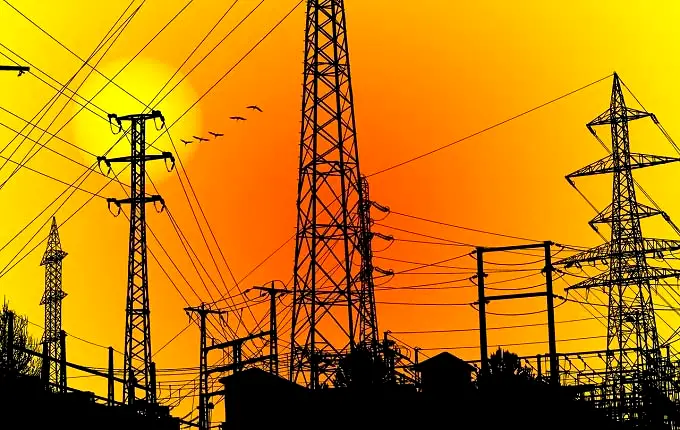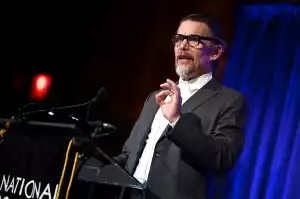FG’s 10,000MW Power Generation Target Under New Threat

FG’s 10,000MW Power Generation Target Under New Threat
THERE were indications, last week that the delivery of 10,000 megawatts, MW, under the revised energy sector plan is set to fail again
The important project, which sets out the medium-term structural reforms to diversify Nigeria’s economy, with a top priority of expanding power sector infrastructure, initially scheduled for execution between 2017 and 2021, under the Federal Government’s Economic Recovery and Growth Plan, ERGP, was extended to December 2022.
But industry experts have indicated that the target might not be realised because of fundamental challenges, including limited investment, lack of adequate infrastructure, poor maintenance, inadequate gas, low water for hydro power stations and increased pipeline vandalism still staring the sector in the face.
Specifically, they contended that the sector currently suffers from inadequate investment, especially as many planned projects have not taken off, thus denying the nation the prospect of generating additional power.
The experts noted that besides poor maintenance of existing infrastructure, inadequate gas supply to thermal stations, low water level at hydro plants and vandalism have also hindered power generation.
In a telephone interview with Vanguard, yesterday, the National President, Oil and Gas Service Providers Association of Nigeria, OGSPAN, Maxi Colman Obasi, said: “The power sector calls for the investment of huge funds. It also demands long term to design, construct and deliver power plants and other assets. From all indications, the remaining time seems to be too short. It is very doubtful if the target would be realised.”
Similarly, in another interview with Vanguard, the President, Nigeria Consumer Protection Network, Kunle Kola Olubiyo, said that power sector calls for long term planning, investment, development and maintenance of assets, capable of generating, transmitting and distributing adequate power to consumers nationwide.
Nigeria needs to embark on massive power generation because the present level is grossly inadequate. According to the United Nations, 1,000MW should be dedicated to one million persons, meaning that for the over 200 million people, we need to generate about 200,000MW.”
Comparing Nigeria, other African nations
Olubiyo, who noted that comparatively, some African countries are already ahead of Nigeria in power generation, stated: “South Africa with a population of about 62 million generates over 50,000MW (50 GW). Egypt with a population of about 107 million people generates over 50,000 MW (50GW).
“Invariably, Nigeria’s quest for inclusive growth and sustainable development and reduction of Energy poverty indices, Food security, Power mechanised farming/Commercial agriculture, and Energy security would be a mirage without a stable, reliable and safe delivery of abudant power supply.”
GenCos blame DisCos, others
In its report – Spinning Reserves to do or not to do – obtained by Vanguard, the electricity generation companies, GenCos, stated: “The inability of the system operator to maintain grid stability to acceptable technical limits has exposed generator units to perform beyond factory rated capability. Frequency deviations out of technical tolerable limits are not only damaging to the units but also are increasing both the machines fixed maintenance cost and variable maintenance costs.”
The GenCos, which also accused Steel Mills for drawing too much load from the system, stated: “Steel Mills form a large chunk of funds both for the DisCos and the TCN, but detrimental to the generation machines. It is trite that Steel Mills create harmonics and causes voltage fluctuations at a very high level. These harmonics creates lots of stress on the rotors of the turbines. They create inverse torques on the blades of the rotors producing cracks and distortions.
“The GenCos have been due to this menace saddled with continuously adjusting their automatic voltage regulator, AVR. There is too much amount of volatile loads mostly brought by Steel Mills. Research shows that close to 50 Steel Mills are connected to the Nigeria electric grid. The loads for the Steel Mills vary from 3 to 35 MW depending on the Steel Mills, going from minimum to maximum to minimum in a continuous cycles varying within 6 to 10 minutes.
“Due to the Steel Mills, the aggregate Steel Mills loads can easily represent several hundreds of MW varying 6 to 10 times an hour from close to 0 MW up to 500 MW and down again close to 0 MW. In addition to the load volatility, there are huge problems created by the Steel Mills.”
“The GenCos do not believe that the DisCos are significantly improving the quality of their distribution feeders this will be further buttressed during the upcoming raining season as a high quantity of feeders’ trip during the next raining season.”
Why spinning reserve, others key
Furthermore, the GenCos, which provides more insight, stated: “In addition to procuring spinning reserve, there is need for adequate monitoring and sanctioning of all participants who go outside the grid code specification.
“Outages/grid collapses occur when there are system disturbances along the transmission line and the ready solution, which is calling up of ‘spinning reserve’ is not readily available and this is because there few or no incentivized providers of this service. International best practice recommends that 10% of the total generating capacity should be allowed for spinning reserve. Thus, the Nigerian grid requires up to 600MW.
“The “Largest Credible Trip” is the largest loss of power inflow that could be caused by a single trip, which will normally be the largest generating unit synchronized to the system; however, it could be an inflow from an exporting area that flows through a single circuit. (As of 2020 the largest Generating Unit on the system was 220MW which is at Egbin plant). As stated in section 15.5.2 of the grid code, the quick reserve is used for second-by-second balancing of supply and demand, and to restore system frequency to its nominal value. Going by the Grid Code and the various markets rules and regulations, all parties are mandated to adhere strictly to their obligations.
“There is no gain stating that there is not enough system inertia as well as spinning reserve and governor control on frequency response. Frequency is the one parameter common to members of a synchronous electric power system, and an accepted indicator of the system’s ability to balance resources and demand as well as to manage disturbances.
“Spinning reserves are the fastest-responding contingency, thus the most critical for maintaining power system reliability. Spinning reserve is the ancillary service that arrests the dangerous frequency drop. Spinning Reserve is provided as an automatic reaction to small load demand changes and maintains system frequency within set limits (50Hz).
“For the GenCos, the absence of the spinning reserves has not been in their best interest. The instability of the grid has forced the GenCos machineries to perform below the designed capacity and this has translated in huge financial implications especially in the light of the cost of generating the electricity that is not fully utilised. GenCos’ plant is at risk, not just from pumps and blowers operating at varying slip, but also from exciter current variations as `Automatic Voltage Regulators (AVRs) try to hold generated voltage constant at varying speed. In the limit, generating units could trip on under- (or over-) speed, leading to cascading loss of supply and system collapse.
System collapse
Besides the low generation and transmission, the nation’s power supply has been unstable, due mainly to frequent system collapse.
Last week, the sector recorded its sixth system collapse in 2022, thus throwing consumers into darkness, which affected economic and other activities nationwide.
Importance of ERGP
However, in its ERGP obtained by Vanguard, the government noted that, “ERGP sets out the medium-term structural reforms to diversify Nigeria’s economy, with a top priority of expanding power sector infrastructure.
“The ERGP recognises the fundamental role of power to the development of all sectors of the economy. In the long term, the ERGP aims to increase power generation by improving operational capacity, encouraging small-scale renewable projects and building additional generation capacity.
“Medium term, the ERGP aims to ensure the delivery of at least 10,000 MW (on-grid and off-grid) of operational capacity by 2020 by optimising the existing installed capacity available for generation, addressing gas supply issues including vandalism and completing major gas infrastructure lines for power. In addition, as part of the ERGP, the FGN aims to improve the financial capacity of the Nigerian Bulk Electricity Trading Plc. (NBET) to support the electricity market, strengthen governance and institutional capacity of sector agencies, and improve the commercial viability of Generation Companies (GenCos) and Distribution Companies (DisCos).
“It was designed to address challenges in power sector reform. The Federal Government of Nigeria launched a far-reaching set of power sector reforms in 2001 that led to the unbundling and subsequent privatisation of electricity generation and distribution companies in 2013. The design of the power sector reforms envisaged four stages of evolution that would culminate into a competitive, efficient and private sector-led electricity market regulated by the Nigerian Electricity Regulatory Commission (NERC), with the Ministry of Power providing general policy oversight.
“The four stages are envisaged as follows: (a) 1st stage – The Pre-transitional Period began with the unbundling of the Power Holding Company of Nigeria (PHCN) in 2005. During this period, privatisation of the Distribution Companies (DisCos) and Generation Companies (GenCos) occurred and was concluded in November 2013. The Interim period also commenced in November 2013 and was characterised by the allocation of sector cash deficits across all market participants due to the absence of commercial trading structures prior to expected tariff reviews; (b) 2nd stage – The Contract Based Market (CBM), also referred to as the Transitional Electricity Market (TEM), involves active trading of bulk power by NBET, as a buyer of power from GenCos and IPPs and a seller of purchased power to DisCos; (c) 3rd stage – The Medium-Term Electricity Market requires the cessation of NBET and novation of contracts between NBET and GenCos/Independent Power Producers (IPP) to the DisCos. In this stage, the DisCos will commence direct purchase of power from the GenCos/IPPs for onward sale to consumers; and (d) 4th stage – The Long-Term Market will be characterised by bilateral contracts between electricity buyers and sellers at all levels and a central balancing mechanism through the creation of a spot electricity market.”







![Silence 2 The Night Owl Bar Shootout (2024) [Hindi]](https://www.memesng.com/r/storage.waploaded.com/images/c892ee4effb83d730c4e143c796c6294.jpg?w=50&ulb=true&ssl=1)
![Evil Does Not Exist (2023) [Japanese]](https://www.memesng.com/r/storage.waploaded.com/images/8e7b8038c56cc3dc158efe6fdb0f7b6d.jpg?w=50&ulb=true&ssl=1)

![Death Whisperer (2023) [Thai]](https://www.memesng.com/r/storage.waploaded.com/images/6c6733a303914a19d4ca3222e42b9d0d.jpg?w=50&ulb=true&ssl=1)
















{{comment.anon_name ?? comment.full_name}}
{{timeAgo(comment.date_added)}}
{{comment.body}}
{{subComment.anon_name ?? subComment.full_name}}
{{timeAgo(subComment.date_added)}}
{{subComment.body}}